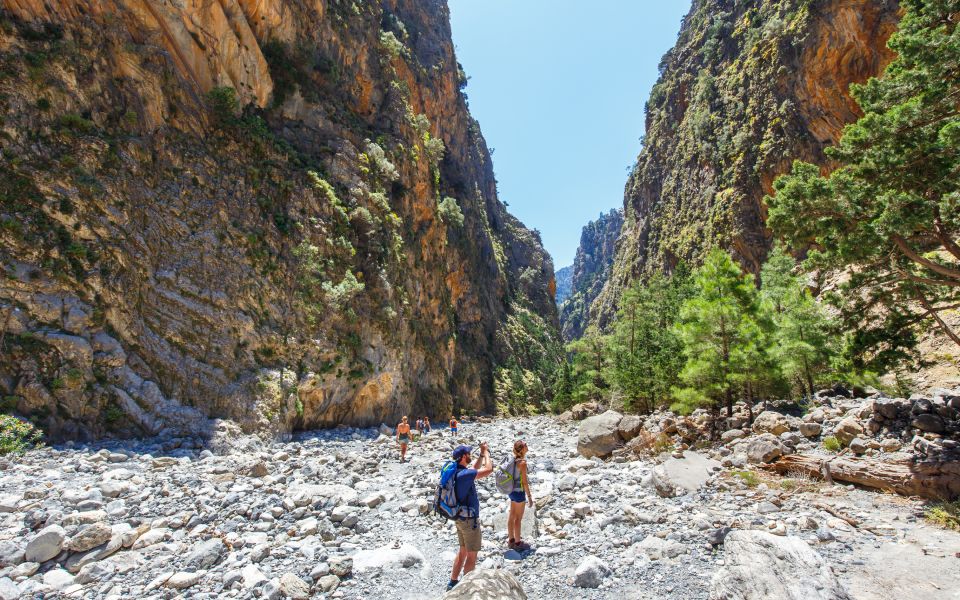1. Walk Samaria Gorge on Crete
Running a length of 15 kilometers from the Omalos Plateau in the White Mountains to the Libyan Sea, the Samaria Gorge is one of the best-known and most impressive natural landscapes in Greece.
It is located in the region of Hania, and traversing it takes the visitor through the rich, wild nature of the White Mountains National Park, past cypress and olive trees, pine forests and countless springs. Historic sites, chapels and abandoned villages create a mosaic of contrasting landscapes.
The route is part of the E4 European trail network. Starting from Xyloskalo and heading to Aghia Roumeli, the path through the gorge is downhill all the way, and easily walkable, crisscrossing the river on small wooden bridges. The gorge is 140 meters wide, narrowing to three meters at the location known as Portes (or Sideroportes). The sight of the soaring rock faces that flank the path is truly unforgettable.
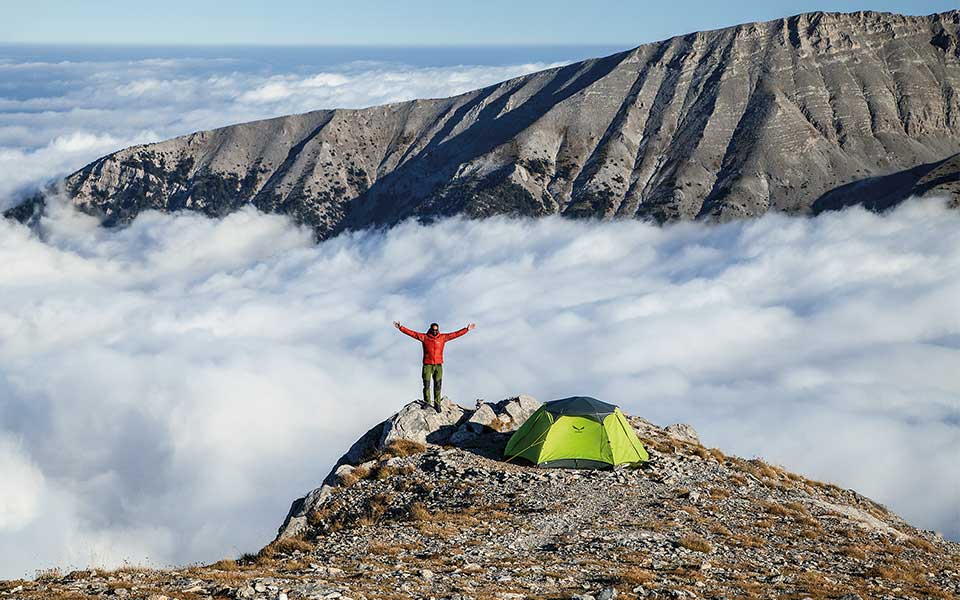
© Olga Charami
2. Climb Olympus, the mountain of the gods
Mt Olympus, the tallest mountain in Greece, is known throughout the world as a place revered by the ancient Greeks. It is a primeval and imposing mountain, almost 3,000 meters high, and a place which guards its secrets closely.
An earthly paradise on the border of the regions of Macedonia and Thessaly, it has for millennia attracted human curiosity and excited the imagination. Its bulk, shape, and high peaks shrouded in clouds inspired awe and veneration in the prehistoric people who first settled in its foothills. They created the legends which would later spawn the gods of the ancient Greeks.
Today, the mountain attracts climbers from around the world. Steep rocky peaks, deep gorges, swift-flowing creeks, alpine meadows and dense forests make up a rare mosaic of uniquely beautiful scenery. For many, it remains remote and mysterious, challenging the visitor to experience how the legends were born, without forgetting that, on Olympus, humans can only achieve what the gods permit.
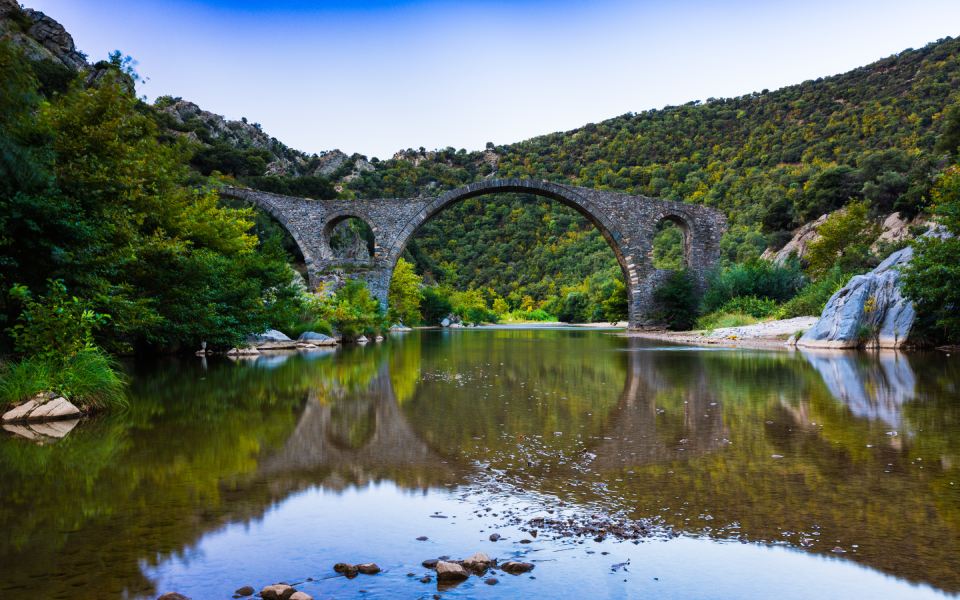
© Shutterstock
3. Hike through the forests of Rodopi
The Rodopi mountain range was named after the mythical Rhodope, Queen of Thrace who, together with her husband Haemus, angered Zeus with their arrogance and were punished by being turned into mountains.
Far from the nearest large city, the mountains offer visitors the opportunity to wander through virgin landscapes with dense forests of conifers, diverse vegetation and numerous waterfalls. At the ends of the days out in nature, welcoming refuges, remote mountain villages and traditional guesthouses await.
Nature lovers will particularly enjoy exploring the valley of the Nestos River in western Thrace – which also includes the riverside forest known as Megalo Dasos (the “Big Forest”). Here, they’ll find a stunning trail, part of the “Paths of Culture”* program, an initiative to highlight the area’s cultural heritage and natural beauty by encouraging visitors to travel through its amazing landscapes.
*The “Paths of Culture” scheme enriches the visitors’ experience, while supporting the local economy and raising awareness among local communities of the cultural and tourism value of their area, and the need to protect its natural capital.
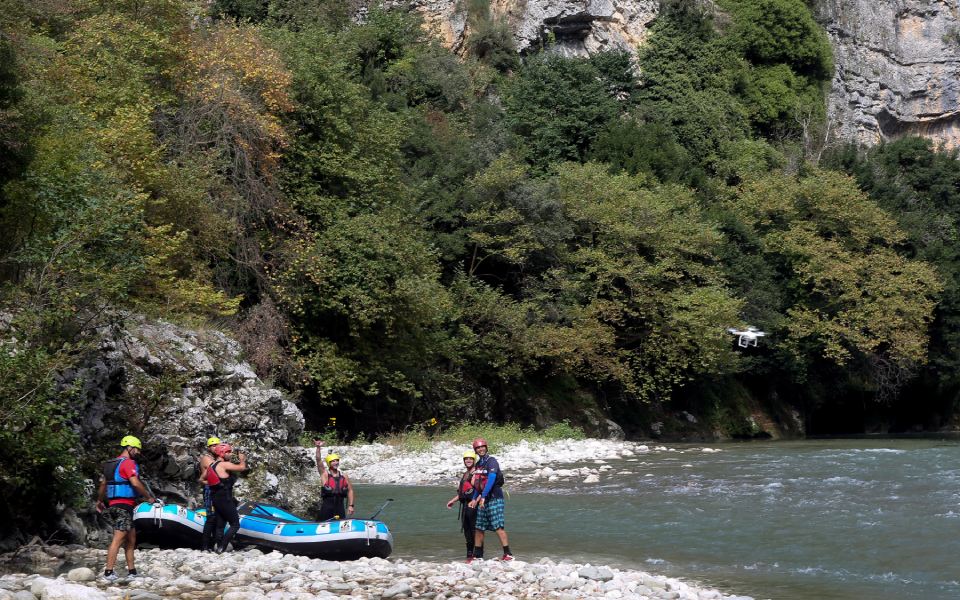
© INTIME NEWS
4. Go whitewater rafting on the Arachthos River
A unique experience awaits those who take to the waterways of the rich natural environment of Epirus, with its imposing gorges and deep canyons, proud mountains and green forests.
The Arachthos River is one of the most beautiful rivers in Greece and ideal for rafting, as it combines exciting rapids with calmer sections. As you travel with the current you will pass through the wild, imposing Arachthos Gorge and stop to see the Glafki Waterfall.
The river also features two of the most famous stone bridges in Greece: that of Arta and of Plaka. Rafting down the river is an exhilarating way for the visitor to take in some of the monuments and the rare beauty of this part of the country.
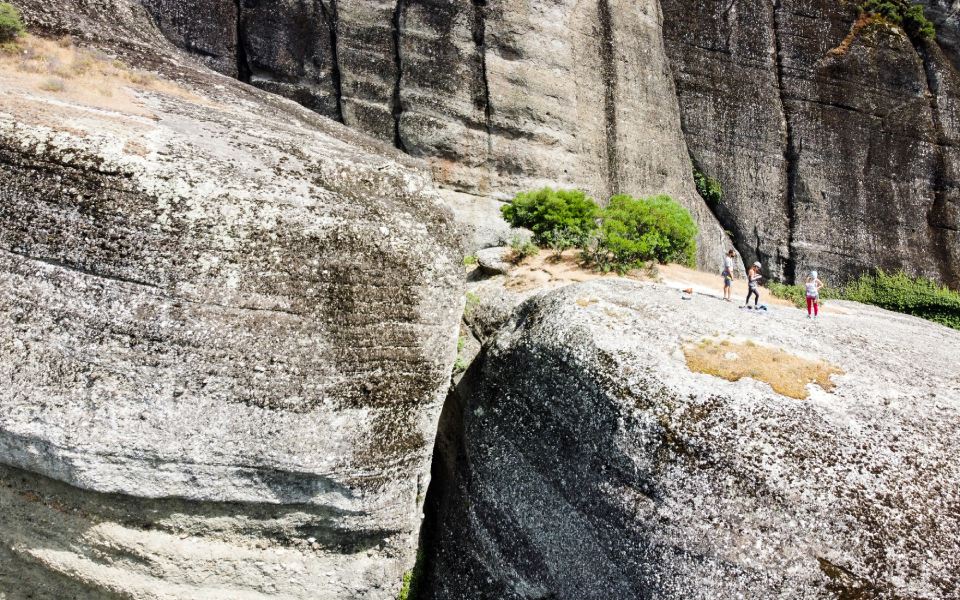
© Olga Charami
5. Go rock climbing up the natural pillars of Meteora
The rock formations of Meteora in the heart of mainland Greece are a miracle of nature. Many are also topped with medieval monasteries that are testaments to a deep spirituality and the power of human will in a uniquely stunning landscape.
Arriving here, you have two options: you can join the busloads of pilgrims and sightseers and visit the monasteries and the geological formations via long flights of stairs and official paths, or you can put on your climbing shoes and pull yourself up the rock face, exploring the vertical world and enjoying views of this UNESCO World Heritage site from above.
The latter is an adrenaline-fueled experience, with countless climbing routes that will help you appreciate the commitment of the monks who arrived here 15 centuries ago to establish monastic life on the steep rocks of Meteora, making the natural caves their hermitages.
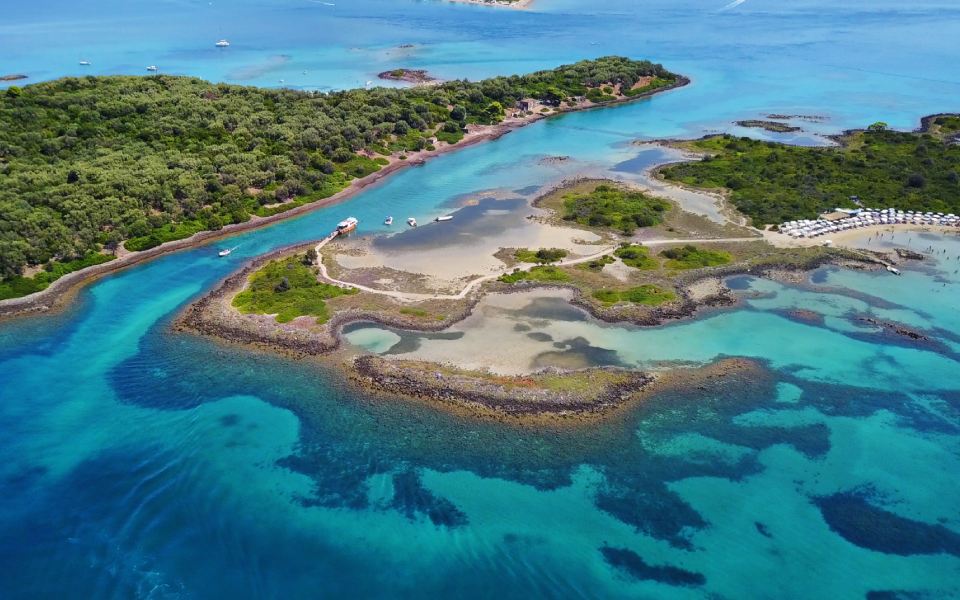
© Shutterstock
6. Go sea-kayaking in Lichadonissia
A kayaking trip in the “Caribbean of Greece” isn’t an experience you’ll soon forget. This densely forested island group just off the coast of northern Evia is an exotic location, a paradise of azure water and white sand. A trip here can include a visit to a shallow wreck, which can be appreciated without scuba equipment.
Another pleasant surprise is the seal colony which lives on these small islands, offering spectacular photo opportunities. Nearby is the island of Strongyli, featuring a lighthouse built on the ruins of a 11th C. monastery.
The Lichadonissia are named after Hercules’ servant and messenger Lichas. According to legend, Hercules’ wife Deianira, suspecting that her husband was being unfaithful to her with Iole, sent the servant Lichas to her husband bearing a poisoned cloak as a gift. As the poison burned him, the enraged Hercules seized and threw Lichas into the sea, where Poseidon turned his poor lifeless body into the islands.
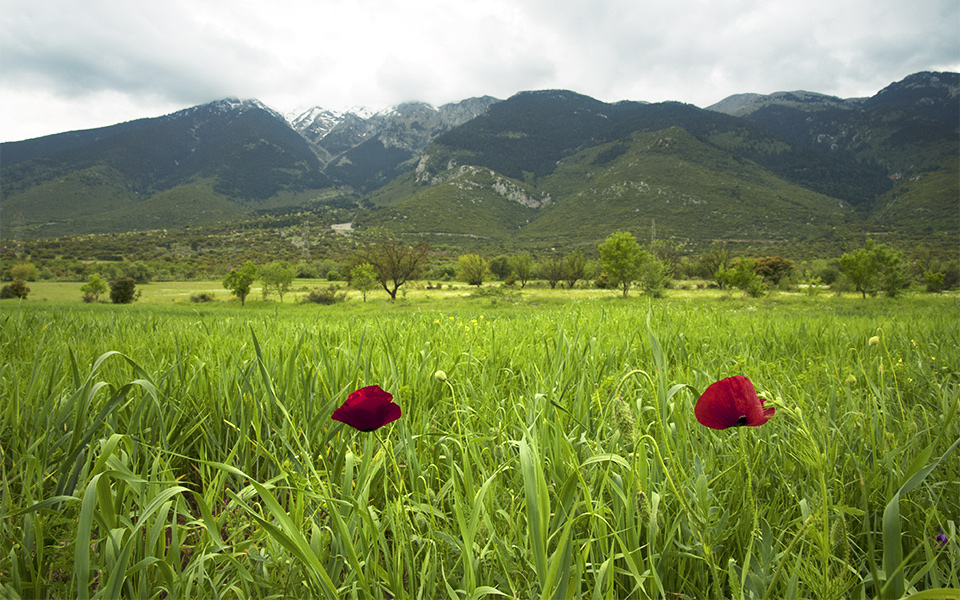
© Shutterstock
7. Explore the caves of Mt Parnassos
On the northwestern flank of Mt Parnassos, at an elevation of around 900 meters, is the little-known village of Vargiani. It’s a beautiful hamlet with stone houses and fresh water from the spring of Bourboula, far from the cosmopolitan haunts on this popular mountain.
On the slope overlooking the village, hidden in a dense spruce forest, is a beautiful and virtually unknown cave known locally as Neraïdospilia, where the fairies of the mountain were believed to live. A path leads from the village to the mouth of the cave, offering superb views of the surrounding area.
The cave’s interior, which has a succession of small lakes and stalactites and stalagmites forming natural sculptures, will enthral you.
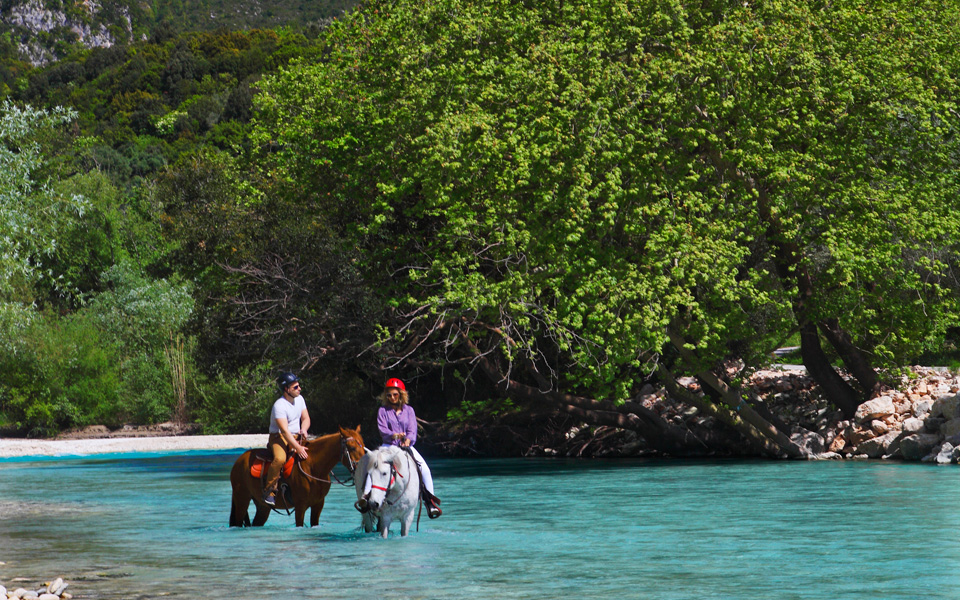
© Olga Charami
8. Go River trekking on the River Acheron
Among the Souli Mountains, at an elevation of 1600 meters and a distance of two kilometers from the village of Glyki, are the springs of the Acheron River. For the ancient Greeks, this river formed the mythical entrance to the underworld, and the site of the last journey for the souls of the deceased.
Starting a little above Glyki and its ancient plane trees, the river creates landscapes of incredible calm and beauty. The lively crystalline waters run through canyons with vertiginous rock walls, creating plunge pools and small lakes in the white limestone rock as the river continues its journey to the sea flanked by the fern-covered slopes of the steep banks.
One of the best ways to discover the majesty of this landscape is to follow the trails used by the inhabitants of Souli during Ottoman rule. The route takes in some true jewels such as the Dala Bridge, the village of Samoniva on the Souli plateau, the “singing springs” in the Drakos Cave, and the “Gates of Hades” – where the river narrows between tall rocks.
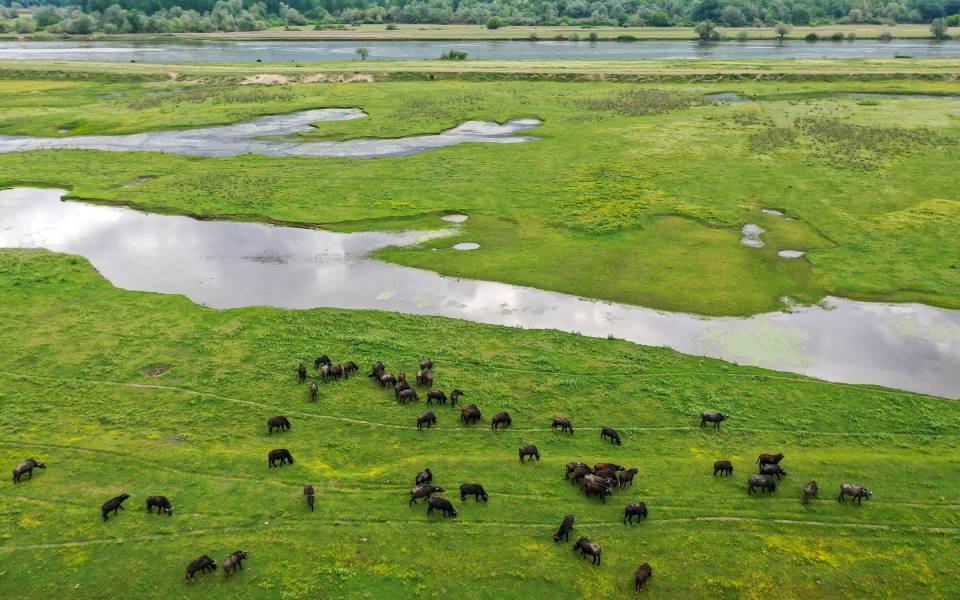
© Shutterstock
9. Cycle around Lake Kerkini
In the northwestern corner of the district of Serres is the man-made Lake Kerkini, which was created in 1932 by damming the Strymonas River.
Since its creation, Lake Kerkini has developed into an important wetland habitat with rich biodiversity – among other things, it’s home to the largest population of water buffalo in Greece.
Mountain biking is the best way to appreciate the surrounding area. There are easy trails around the lake, and visitors can cycle by the water buffalo farms, the lakeside forest, and beyond, either south to the Kroussia Mountains or east to the bike trials of Sidirokastro, in the shadow of the Belles Mountains on the Greek-Bulgarian border.
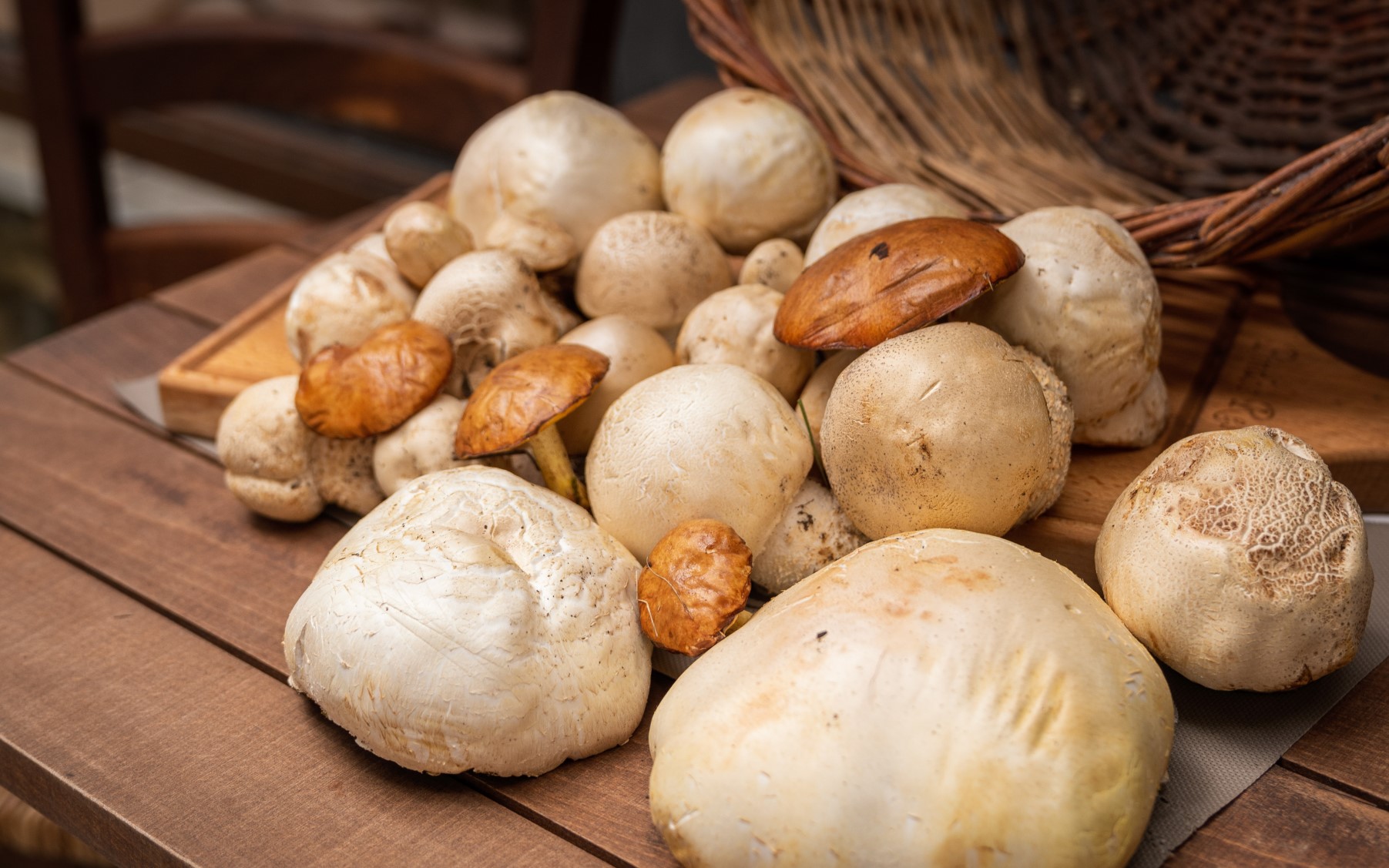
© Nicholas Mastoras
10. Guided mushroom-hunting on Mainalo
The richly forested Mt Mainalo in Arcadia provides an ideal habitat for wild mushrooms, and is very popular with mushroom hunters. In spring, after a heavy rainfall, the first mushrooms appear around tree trunks, and visitors on organized tours soon show up to pick them.
Carrying wicker baskets, and always following the instructions of an expert guide, they carefully collect the edible treasures. Then they get to taste their harvest, savorins mushroom dishes cooked outdoors next to natural springs and accompanied by local delicacies and wine.

